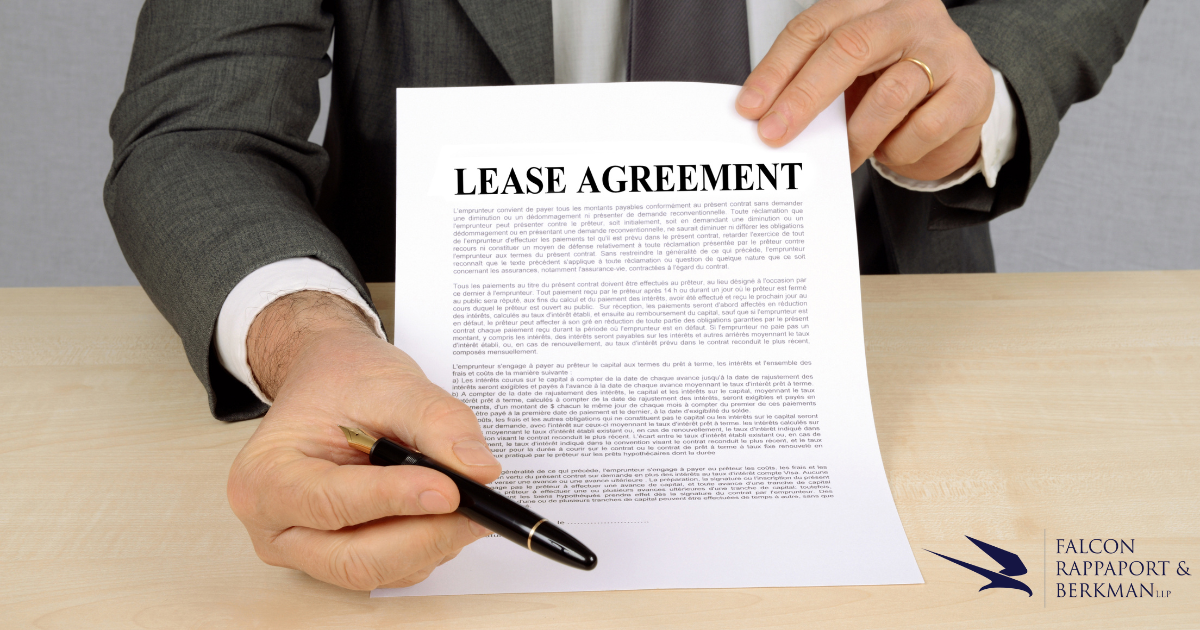Southern District of New York Bankruptcy Judge Alters Calculation of Lease Rejection Damages for Landlord
By: Michael L. Moskowitz, Esq. & Melissa A. Guseynov, Esq.
In a recent decision of interest to landlords and tenants alike, Bankruptcy Judge Michael E. Wiles, sitting in the United States Bankruptcy Court for the Southern District of New York (SDNY), held that landlords must use the “time approach” in calculating lease rejection damages in a tenant’s bankruptcy case. This holding significantly reduces the amounts potentially recoverable by landlords in a confirmed chapter 11 plan and greatly favors tenant-debtors. See In re Cortlandt Liquidating LLC, et al., Case No. 20-12097 (MEW) (Bankr. S.D.N.Y. Feb. 2, 2023).
The calculation of lease rejection damages is set forth in 11 U.S.C. §502(b)(6)(A). In relevant part, section 502 limits a landlord’s damages from a terminated lease to the rent reserved under that lease “for the greater of one year, or 15 percent, not to exceed three years, of the remaining term of such lease …” 11 U.S.C. 502(b)(6)(A).
Two approaches have evolved regarding the interpretation of the “15% of the remaining lease term.” Historically, bankruptcy practitioners in the Southern District of New York have routinely employed the majority interpretation known as the “rent approach,” whereby the 15% is calculated as the total amount payable pursuant to the lease under the total remaining lease term. Utilizing this method, a landlord’s damages are capped at the larger of one year’s rent or 15% of the remaining rent due under the lease.
Conversely, a minority of courts have utilized the “time approach,” pursuant to which a landlord’s claim is capped at an amount equal to the total rent due equal to 15% of the remaining lease term, so long as that time period is at least one year and no longer than three years. The “time approach” does not account for increases in rent that may occur after the three-year time limit. Thus, the “time approach” results in lower lease rejection claims for landlords, while the “rent approach” results in larger claims.
In determining that the “time approach” calculation should apply, Judge Wiles explained that over time courts have gradually embraced the “time approach” to calculate lease rejection damages. In addition, the Court noted the plain language and legislative history also lend support to this debtor friendly interpretation. Lastly, Judge Wiles stated the legislative intent underlying section 502(b)(6) of the Bankruptcy Code was intended to limit a landlord’s claim in bankruptcy.
It is important to note the Second Circuit has not opined on this issue but may do so in the future. Regardless of possible future guidance from the Second Circuit, this decision highlights the lack of unanimity among the Southern District of New York bankruptcy judges. Accordingly, potential debtors and their attorneys evaluating multiple bankruptcy venues may rule out SDNY if uniformity and predictability are key objectives.
Falcon Rappaport & Berkman LLP will continue to follow the evolving case law and provide updates to its clients and colleagues.
DISCLAIMER: This summary is not legal advice and does not create any attorney-client relationship. This summary does not provide a definitive legal opinion for any factual situation. Before the firm can provide legal advice or opinion to any person or entity, the specific facts at issue must be reviewed by the firm. Before an attorney-client relationship is formed, the firm must have a signed engagement letter with a client setting forth the Firm’s scope and terms of representation. The information contained herein is based upon the law at the time of publication.

